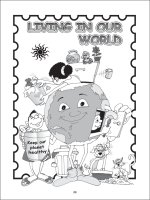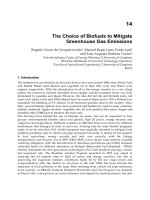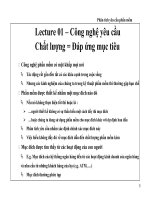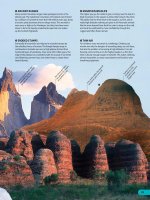3A8 week 01 lecture 01 planet earth
Bạn đang xem bản rút gọn của tài liệu. Xem và tải ngay bản đầy đủ của tài liệu tại đây (2.06 MB, 28 trang )
Geology for Engineers
Planet Earth
Organisation
• 30 Lectures: Monday, Tuesday,
Wednesday 10-11am, M17
• 4 Practicals: Tuesday afternoon, Main Lab
Geology
• Field Trip: Killiney (date to be confirmed),
full afternoon
• See course website for full details!
Assessment
• 3 hour exam
• All the material taught in the course,
including practicals and field-trip, is
examinable!!!
• Answer 5 out of 7 questions
• 6 set by PB + QC, 1 by BM
• See past exam papers for examples!
Course Notes
Recommended Texts
• Course web-site
• Understanding Earth (2nd edition), Press &
Siever
• The Solid Earth (2nd Edition), Fowler
• Introducing Groundwater (2nd Edition),
Price
• Water wells and boreholes, Misstear,
Bank & Clark
Formation of the Solar System
• The stages of solar system formation start
with a protostar embedded in a gas cloud,
then to an early star with a circumstellar
disk, to a star surrounded by small
"planetesimals" that are starting to clump
together to a solar system like ours today.
Formation of the Solar System
protostar
planetesimals
www.jwst.nasa.gov/birth.html
circumstellar disk
home
Credit: Shu et al. 1987
Composition of the Solar System
• Jovian planets: Jupiter, Saturn, Uranus,
Neptune
– Large masses & low densities.
– Mainly composed of gaseous H & He and
frozen C-H-N volatiles.
– Interiors may be similar to that of Earth
Composition of the Solar System
• The inner, terrestrial planets: Small
masses & high densities.
– Mercury: No atmosphere. Similar in
composition to Earth.
– Venus: Dense atmosphere of CO2 & N. Similar
in composition to Earth.
– Earth: More about “us” later.
– Mars: Polar ice caps in winter – water?
Uniform chemical composition – i.e. no iron
core and silicate mantle as in Earth.
The Asteroids
www.aerospaceweb.org/
Composition of the Solar System
• The asteroids: Located in a belt between
the terrestrial and Jovian planets.
• Meteorites: Most are probably fragments
from the asteroid belt of our solar system.
– Siderites, or “irons” (98% metal)
– Siderolites, or “stony irons” (50% metal, 50%
silicate)
– Aerolite, or “stones” (silicate > metal)









